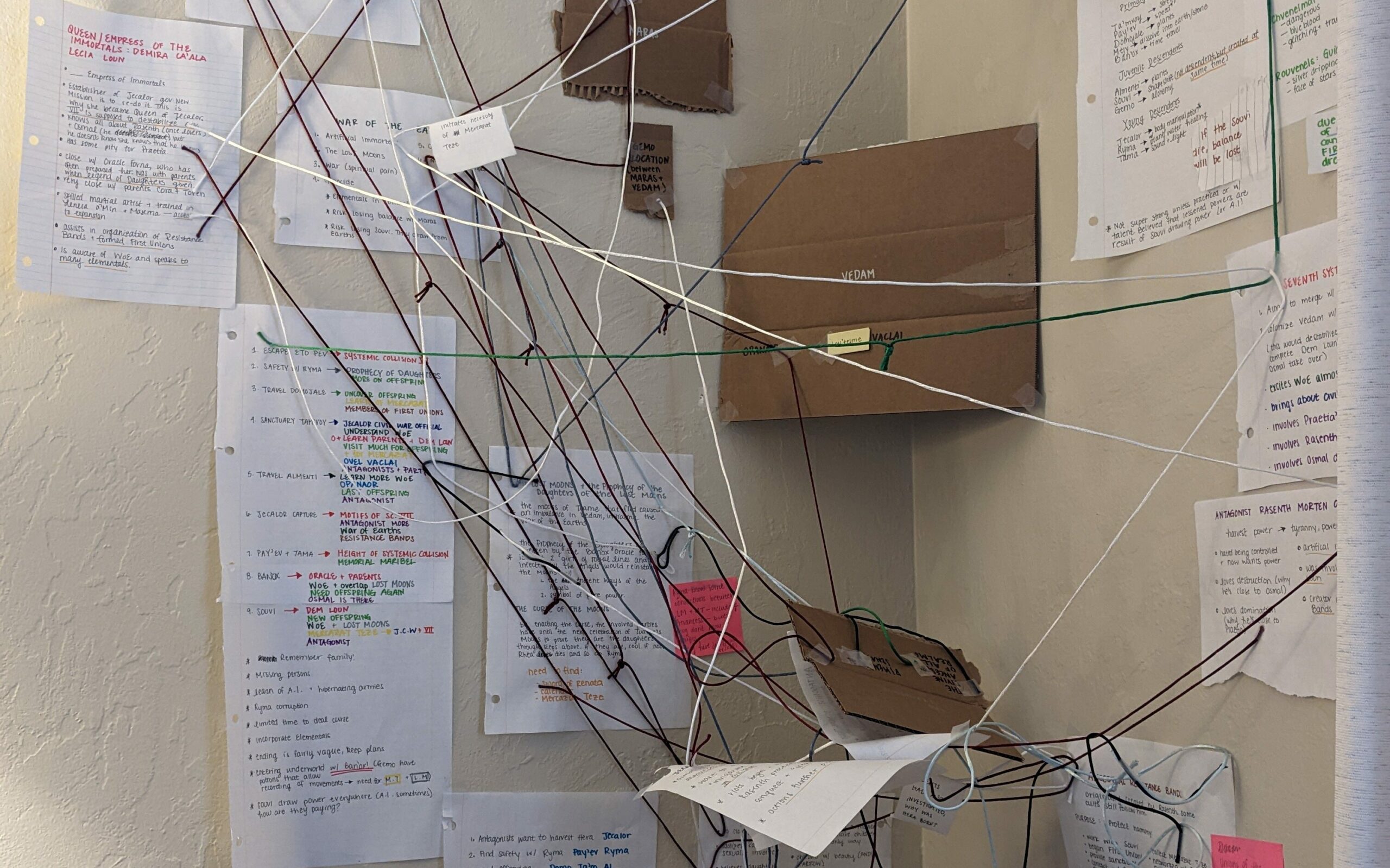Many people are aware that since moving to California, I have been managing a Chaos Wall. This wall has shifted in size and shape and has gone through several renovations since its initial construction. Until recently, this wall of chaos was actually my only means of order; I was able to track my plotlines, histories, antagonists, and power dynamics with various levels of intensity. But unfortunately, the fun has become dysfunctional.
The chaos wall was falling for a while: pieces were coming off the wall, strings loosened or became detached, names no longer worked with the languages I was writing, and so forth. Then, when I came home from a workshop conference at the end of October, I found entire sections of the wall had fallen. The falling chaos and dismantled organization of my thoughts would usually frighten me into adding numerous strips of tape to support the copious amounts of paper. Instead, I took down the pieces that were hanging and let the strings and other smaller papers dangle. Essentially, I did absolutely nothing to save my glorious chaos wall.
This chaos wall, while a beautiful example of my interior world of networked theories and complex structures of government and war, it doesn’t represent where I am as a writer.

Currently, I’ve been working on the larger abstracts of the world like religion, government, history, and theories of the divine beings. These things are more than thoughts that participate in the creation of Vedam, or critical themes that are reimagined in a new galaxy, but also deeply spiritual and interior contemplations. With these complex discussions, I’ve found that I am challenging the very world I live in by manipulating the boundaries of fiction and reality. The act of blurring fiction and reality is an act of resistance against present social expectations, stereotypes, governments, and belief systems. This resistance is found in creating language that move beyond western structures of language, mirroring religions and governments in a fictional setting so critique can take place without bias, and also by discussing identity without the constraints of binaries.
Many of these discussions have been swirling in my mind for years, but the manifestation of these ideas hasn’t been possible until now. But of course, these lovely things cannot be expressed in a chaos wall or in any tangible way, and I’m learning this as I write, too.
My graduate poetry workshop has been the breeding ground for such discussions and difficult questions. I’ve found myself asking questions about setting, imagery, and believability: how can I bring my readers to this place with the use of space on the page and not necessarily words? How can I make my reader believe in this world? If I have a reader who refuses to believe anything, how could they possibly believe in this place? How can I describe a place for the soul in my writing while still using evocative and natural imagery?
It’s these questions, discussions, and larger contemplations that have me removing myself from my chaos wall. While the Chaos Wall may make a grand new appearance over winter break as I revamp the story (again, probably for the fourth time in a year), I’m sticking to long prose poetry and meditation.
